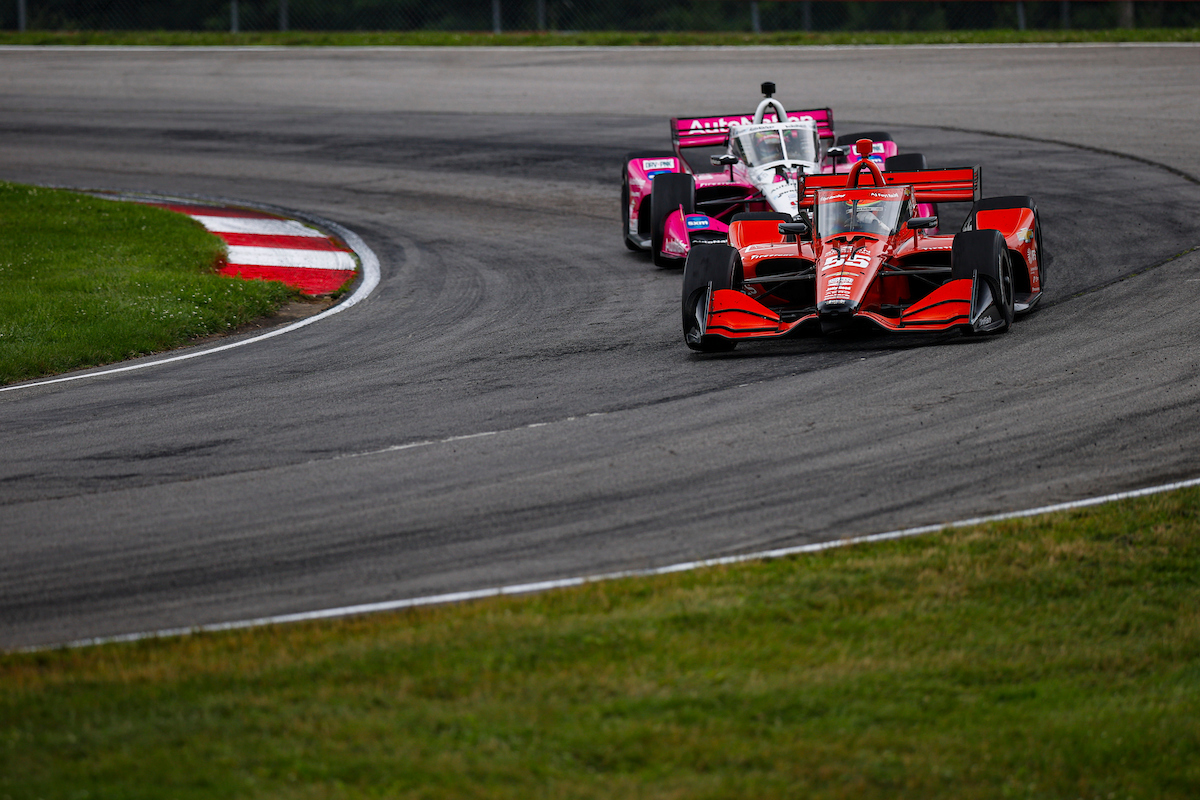Backmarkers being allowed to hold up the leaders in an IndyCar race is a topic that reared its head again at in the Honda Indy 200, after AJ Foyt Racing’s Benjamin Pedersen proved particularly obstructive on his way to 26th place. Mid-Ohio race …
Backmarkers being allowed to hold up the leaders in an IndyCar race is a topic that reared its head again at in the Honda Indy 200, after AJ Foyt Racing’s Benjamin Pedersen proved particularly obstructive on his way to 26th place.
Mid-Ohio race winner Alex Palou saw his lead over Colton Herta shrink from 8.3s to 3.8s while trying to lap the rookie without using up too much push-to-pass boost, which is supposed to be for passes for position.
The fight to stay on the lead lap is understandable, to a degree, since if there is a full-course caution, the driver will get his lap back when the field bunches up. But more surprising was that even once he was lapped by the leader, Pedersen was similarly adversarial to the other frontrunners.
“I think that the blue flag rule, it’s crazy,” said Will Power, who finished third. “You use push-to-pass up and have to race somebody that’s going to be a lap down like you’re racing for position. The series is so tight and competitive, and everyone is so good now that I think we could have a blue flag rule. It’s not like we have yellows constantly, and you’re going to get your lap back.
“Maybe they do it in the second half of the race, but it’s ridiculous when a leader gives up 10s.”
Turning to race runner-up Dixon, Power said: “I think you were 5s down the road, I closed it right up. Probably would have overtaken you if I didn’t get held up while going a couple of laps longer.
“We should have a talk about it,” he continued to the assembled media, before Dixon interjected, “We do every year.” Power nodded, “We tell them every year. They’re like, ‘Yeah, yeah, we hear you.’ Then… crickets.”
[lawrence-auto-related count=3 category=1408]
Asked if there was a simple solution, Power replied: “The problem is, it takes a lot of people to police that because if there’s a blue flag rule and the first guy passes, then you’ve got to have a command blue for everyone. But I think if everyone just understood, if you get the blue flag, you have to let the driver go within the lap.
“That, I think, is their issue – the amount of people in race control that would have to police that. It becomes a bit difficult. But we’re at the stage where this competition is so tough, maybe we have to add some people to do that.
Dixon said that disabling push-to-pass for the backmarker should be part of the solution, to which Power commented, “That was the one where they say, ‘Well, how do we police? Do we disable it for everyone after that?’ It sounded like that was a big problem.
“But it’s not like a ton of people go a lap down anymore anyway. Yeah, disabling the push-to-pass would be a big step if you are going to be a lap down, yeah.”
Although angry at the time he was seeing his lead evaporate behind Pedersen, Palou was calm in front of the media afterward.
“It’s IndyCar; I know the rules,” said the winner, “But at the same time, it’s very frustrating when you are leading and you try to open the gap, and they don’t let you pass, but they are using the overtake, like 20s, 30s a lap, to try to stay up front. On top of that, once you are side-by-side that they are so aggressive defending. Obviously it’s really frustrating when you are leading.
“I knew I had to get past also because you are using more overtake, you are using more fuel, you are using more tires, and you’re not able to do the race you want, just because of a backmarker car that wants to stay on the lead lap.
“The issue is that once you pass them, they let everybody pass because they already lost the lap, right? So, yeah, it’s frustrating. I know it’s the rules.
“I would like it to change. It’s not going to change. So, yeah, whatever. I’m more relaxed now!”
Presented by:
 In the team’s IndyCar-led teleconference held shortly after the Friday announcement, team director Larry Foyt also made no mention of the Danish-American driver until the question of Pedersen’s future with the team was raised by a reporter who asked if Robb was replacing Pedersen.
In the team’s IndyCar-led teleconference held shortly after the Friday announcement, team director Larry Foyt also made no mention of the Danish-American driver until the question of Pedersen’s future with the team was raised by a reporter who asked if Robb was replacing Pedersen.


